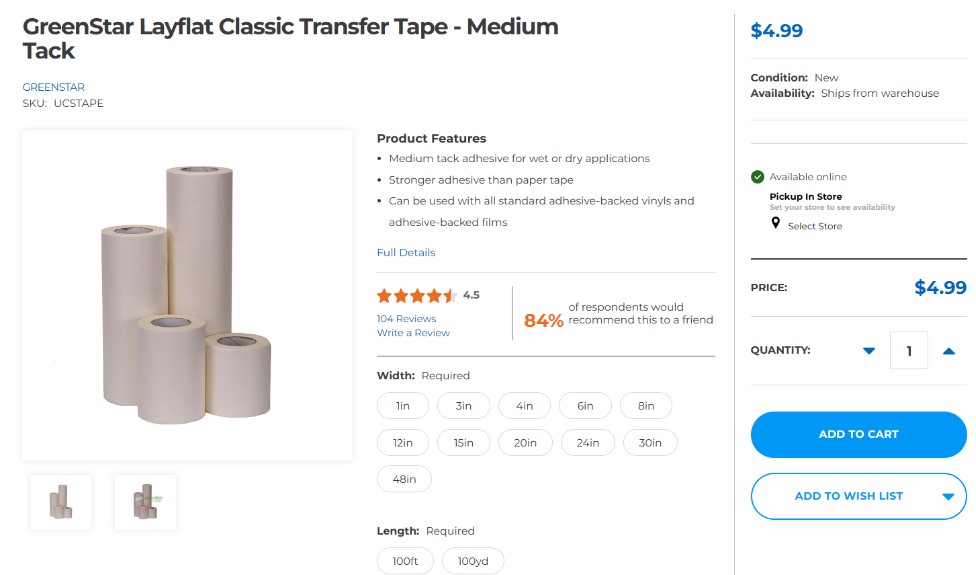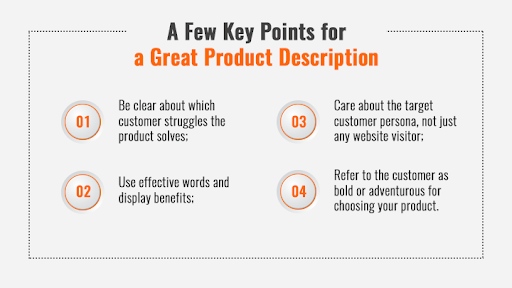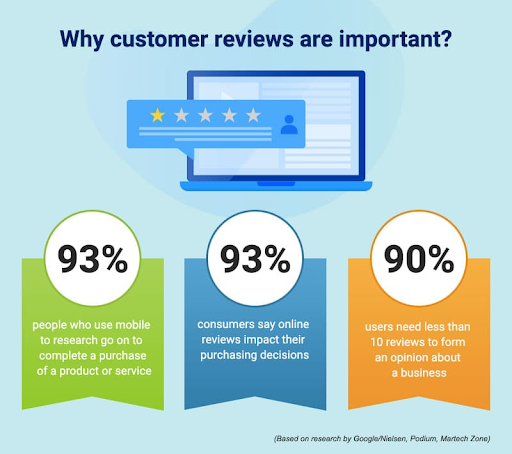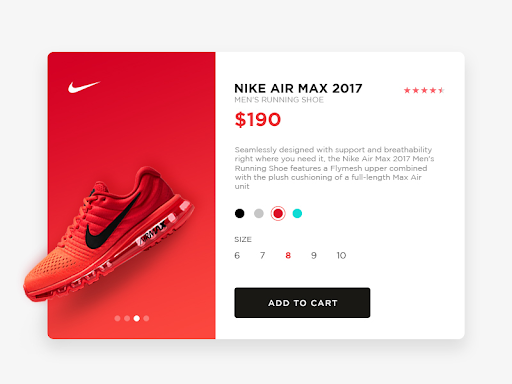Table of Contents
Introduction
E-commerce platforms offer numerous benefits to buyers and consumers, but a significant drawback is the inability to physically examine the products they intend to buy.
However, the e-commerce industry is working towards resolving this issue by focusing on the finer aspects of the business. Product detail pages are essential components of e-commerce websites as they provide potential buyers with comprehensive information about the items they wish to purchase.
Product detail pages act as digital storefronts, offering a detailed overview of a product’s features, specifications, and benefits to potential customers. By optimizing these pages, online retailers can improve user experience, boost conversions, and enhance search engine visibility.
This guide aims to explore the significance of product detail pages, delve into their importance, and provide actionable insights on how to refine and optimize them for maximum impact.
What is a Product Detail Page?

A webpage that provides information on a product’s size, color, price, delivery information, reviews, and other details that shoppers may need before making a purchase is known as a product detail page on e-commerce sites.
The page aims to ensure online shoppers have all the required information to make an informed decision and complete their purchase. Product data, features, benefits, and images are combined to create a concise and user-friendly webpage that persuades shoppers to complete their purchases.
Furthermore, a product detail page aids customers in avoiding information overload while providing them with all the necessary details they need when deciding on purchasing a product.
Components of a Product Detail Page

A product detail page generally comprises the following elements:
- Product Title: This clearly states the name or title of the product.
- Product Description: This provides detailed information about the product, including its features, specifications, dimensions, materials, and usage instructions.
- Product Images: This includes high-quality images showcasing the product from different angles, allowing customers to inspect it visually.
- Pricing Information: This displays the price of the product, including any discounts or promotions.
- Add to Cart/Buy Now Button: This allows customers to add the product to their shopping cart or proceed directly to checkout.
- Product Variations: If applicable, this includes options for different sizes, colors, or styles of the product.
- Customer Reviews and Ratings: This displays feedback from previous buyers, helping prospective customers make informed decisions.
- Product Availability: This indicates whether the product is in stock and the estimated delivery times.
- Related Products: This suggests other products that may complement or be of interest to the customer.
- Social Sharing Buttons: This includes options to share the product on social media platforms.
- Trust Badges and Security Icons: This displays symbols indicating secure payment methods and customer protection measures.
- Additional Information Tabs: This includes sections for shipping details, returns policy, warranty information, and FAQs.
- Call-to-Action: This encourages customers to take the desired action, such as making a purchase or contacting customer support.
All of these components work together to provide customers with all the necessary information to make an informed purchasing decision.
The Role of PDPs in E-commerce
- Influence on Purchasing Decisions: PDPs guide customers in making decisions by providing detailed information and high-quality visuals, which significantly influence purchasing decisions.
- Impact on Customer Satisfaction and Retention: Well-made PDPs lead to higher customer satisfaction, retention, and loyalty. This can be achieved through accurate product representation, comprehensive FAQs, customer reviews, and easy navigation.
- Educational Value: PDPs serve an educational purpose by informing customers about the product, its uses, and care instructions. This information can help customers use the product more effectively, thereby increasing satisfaction.
- Brand Communication: Through the tone of voice, imagery, and overall presentation, PDPs communicate the brand’s identity and values. They offer an opportunity to build brand trust and loyalty by ensuring consistency in messaging and aesthetics.
Why are Product Detail Pages important?

Product Detail Pages (PDPs) are essential for e-commerce businesses for several reasons:
- Information Hub: PDPs act as a centralized source of detailed information about a product, including its features, specifications, and benefits. This information helps customers make informed purchase decisions.
- Decision Influence: Well-optimized PDPs can significantly influence customer perceptions and purchasing behavior. Clear descriptions, high-quality images, and positive reviews instill confidence in potential buyers and increase the likelihood of conversion.
- User Experience: PDPs contribute to the overall user experience of an e-commerce website. Providing a seamless and informative browsing experience enhances customer satisfaction and encourages repeat visits and purchases.
- Search Engine Visibility: Optimized PDPs can improve search engine rankings, making it easier for potential customers to find your products online. This visibility can drive organic traffic to your website and increase the chances of sales.
- Conversion Rate Optimization (CRO): By strategically designing and optimizing PDPs, businesses can increase conversion rates and maximize revenue. Compelling calls-to-action, persuasive product descriptions, and intuitive navigation can all contribute to CRO efforts. Enhancing User Experience
The importance of PDPs in providing a seamless shopping experience cannot be overstated. A well-constructed PDP offers easy navigation, allowing customers to find information quickly.
- High-resolution images and videos enhance the shopping experience by providing a realistic view of the product.
- Integrating customer reviews and Q&A sections enriches the shopping experience by providing valuable insights from other customers.
- Informative, engaging, and user-friendly product description pages significantly enhance the overall shopping experience, leading to greater customer satisfaction and loyalty.
Building Trust and Credibility
PDPs play a crucial role in establishing trust and credibility with potential buyers. Detailed product information, including specifications, features, and benefits, helps set realistic expectations.
- Providing accurate product descriptions and meeting customer expectations is crucial for building trust in the brand.
- Sharing honest customer reviews and transparent information about pricing, shipping, and returns policies can enhance the brand’s credibility and reliability.
- Maintaining transparency in business operations is essential for fostering long-term customer relationships and loyalty.
SEO Benefits
From an SEO perspective, PDPs offer significant benefits that can enhance search engine visibility and organic traffic.
- Optimizing product titles, descriptions, and meta tags with relevant keywords improves search engine rankings and increases the visibility of product pages.
- Unique and high-quality content on product pages can attract backlinks from other websites, further boosting SEO performance and driving more organic traffic to the website.
- Optimized images and videos enhance user experience and provide additional opportunities for ranking in image and video search results, leading to more conversions and sales.
In summary, PDPs are important because they provide essential information, influence purchasing decisions, enhance user experience, boost search visibility, and ultimately drive sales and revenue for e-commerce businesses.
Difference between Product Detail Page and Product Landing Page

Product Detail Pages (PDPs) and Product Landing Pages (PLPs) have different roles in the e-commerce ecosystem:
Purpose
Product Detail Pages (PDPs)
- They aim to educate potential customers with comprehensive information about a specific product, including its features, specifications, and benefits.
- Their ultimate goal is to help customers make a purchase decision.
Product Landing Pages (PLPs)
- They serve as an entry point for potential customers who come from marketing campaigns or advertisements.
- Their main focus is to guide visitors towards a specific action, such as buying a product, signing up for a service, or downloading a resource.
Content
Product Detail Pages (PDPs)
- They usually include detailed product descriptions, high-quality images, pricing information, customer reviews, and related products.
- They provide in-depth information to help customers evaluate the product.
Product Landing Pages (PLPs)
- They contain concise and focused content tailored to the specific campaign or promotion.
- They often feature compelling headlines, persuasive copy, eye-catching visuals, and a clear call-to-action (CTA) to encourage visitors to take the desired action.
Navigation
Product Detail Pages (PDPs)
- They are usually accessed by customers who have already shown interest in a particular product and navigated through the website.
- They typically have navigation elements that allow users to explore additional product details, reviews, and related products.
Product Landing Pages (PLPs)
- They are standalone pages created for a specific marketing campaign or promotion.
- They often have minimal navigation options to keep visitors focused on the intended action, such as completing a purchase or filling out a form.
Conversion Focus
Product Detail Pages (PDPs)
- They aim to provide information and facilitate the decision-making process for potential customers.
- While conversion is important, PDPs also aim to educate and engage visitors to ensure they make informed purchase decisions.
Product Landing Pages (PLPs)
- They are designed with a strong emphasis on conversion.
- They are optimized to maximize the likelihood of visitors completing the desired action, whether making a purchase or subscribing to a service.
In conclusion, both Product Detail Pages and Product Landing Pages are crucial components of e-commerce websites, and they serve unique roles in the customer journey. PDPs focus on providing detailed information about products to facilitate purchase decisions, while PLPs are optimized for conversions and designed to guide visitors toward specific actions.
How to Optimize Your Product Detail Pages

Optimized product detail pages provide users with clear and relevant information, making it easier for them to make informed purchasing decisions. A positive user experience increases the likelihood of conversions and encourages repeat business.
Here is a detailed guide on how to optimize your product detail pages:
Use Catchy Product Title
- Product titles should be attention-grabbing, descriptive, and SEO-friendly.
- They should communicate what the product is about but keep it short and succinct.
- A well-crafted product name can make your product stand out in search engine results, so make sure to keep it under 70 characters.
- Avoid discussing the benefits or functionality of the product in the title and save that for the product detail page
Clear Product Descriptions

- Provide detailed and accurate descriptions of your products, including key features, specifications, dimensions, and materials used.
- Use descriptive language that highlights the product’s benefits and unique selling points.
- Ensure that the language used is concise and easy to understand, avoiding jargon that might confuse or deter potential buyers.
- Incorporate keywords relevant to your product to improve search engine visibility and attract organic traffic.
High-Quality Images and Videos

- Include multiple high-resolution images that showcase different angles, close-ups, and product details.
- Use professional photography to accurately represent the product and create a visually appealing presentation.
- Consider incorporating product videos to provide a dynamic demonstration of its features, functionality, and usage.
- Optimize images and videos for fast loading times to prevent delays that could frustrate users and lead to bounce rates.
User-Friendly Design and Navigation
- Ensure that your product detail pages have a clean and organized layout that prioritizes essential information and avoids clutter.
- Make use of intuitive navigation elements such as breadcrumbs, filters, and sorting options to help users easily find what they’re looking for.
- Implement clear and prominent calls-to-action (CTAs) such as “Add to Cart” or “Buy Now” buttons that guide users towards making a purchase.
- Optimize page load times by minimizing unnecessary elements and leveraging caching and compression techniques.
Customer Reviews and Rating

- Encourage customers to leave reviews and ratings by providing incentives or rewards for their feedback.
- Display customer reviews and ratings prominently on your product detail pages to build trust and credibility.
- Respond promptly to customer reviews, whether they are positive or negative, to show that you value customer feedback and are committed to providing excellent service.
- Use feedback from customer reviews to identify areas for improvement and make necessary adjustments to your products or services.
Effective Call-to-Actions (CTAs)
- Use clear and compelling CTAs that prompt users to take action, such as making a purchase, signing up for updates, or contacting customer support.
- Place CTAs strategically throughout the product detail page, including above the fold and at key decision points in the user journey.
- Experiment with different wording, colors, and designs to optimize the effectiveness of your CTAs and encourage higher conversion rates.
- Monitor and analyze the performance of your CTAs using A/B testing and analytics tools to identify areas for optimization and improvement.
Mobile Responsiveness
- Ensure that your product detail pages are fully responsive and optimized for mobile devices, including smartphones and tablets.
- Use responsive design techniques to adapt the layout and content of your pages to fit various screen sizes and resolutions.
- Test your product detail pages on different mobile devices and browsers to identify issues or usability concerns.
- Optimize images and multimedia content for mobile viewing to minimize load times and improve performance on slower connections.
Advanced Strategies
Implementing advanced strategies in your Product Detail Pages (PDPs) can further elevate the shopping experience, increase customer engagement, and boost sales. Here are some sophisticated tactics to consider:
Personalization
Personalization involves customizing the shopping experience based on the customer’s preferences, behavior, and past interactions. This can lead to a more engaging and satisfying shopping experience, which, in turn, can increase conversion rates and customer loyalty.
Strategies for Personalization:
- Dynamic Content: Display content on PDPs that reflects the interests of the user, based on their browsing history or purchase behavior.
- Personalized Recommendations: Suggest products that are relevant to the user’s interests or have been frequently bought together with the item being viewed.
- Customized Offers: Present special deals or discounts based on the user’s shopping habits or milestones (e.g., birthdays).
Interactive Elements
Incorporating interactive elements like Augmented Reality (AR), Virtual Reality (VR), or 3D images can significantly improve product understanding and engagement.
These technologies allow customers to see products in a more realistic setting, helping them make informed purchasing decisions.
Benefits of Interactive Elements:
- Enhanced Engagement: Interactive visuals can capture and retain customer attention more effectively.
- Better Visualization: Customers can get a better sense of the product’s size, scale, and functionality.
- Increased Confidence: By providing a more immersive experience, customers can feel more confident in their purchasing decisions, potentially reducing return rates.
Cross-Selling and Upselling
Effectively recommending additional products can enhance the shopping experience, increase average order value, and boost customer satisfaction.
Effective Cross-Selling and Upselling Techniques:
- Relevant Recommendations: Display products related to the item being viewed, such as accessories or complementary items, to encourage additional purchases.
- Bundles and Sets: Offer bundled deals or sets that include the primary product along with related items at a discounted price.
- Upsell to Premium: Suggest a higher-end version of the product being viewed, highlighting the benefits of additional features it offers.
Examples of Inspiring Product Detail Pages
Here are some examples of well-designed product detail pages:
Wheel Rack Product Page

Wheelrack’s product detail pages feature a sleek layout and high-resolution images, allowing customers to visualize tires and wheels. Detailed descriptions highlight unique features, aiding informed decisions. With a focus on simplicity and functionality, Wheelrack ensures a seamless browsing experience for customer satisfaction.
Daily Rise Coffee Product Page

Daily Rise Coffee’s product detail pages feature an inviting layout, showcasing a diverse range of coffee blends. Vibrant images and detailed descriptions offer insight into each brew’s origin, taste, and brewing tips. With user-friendly navigation, the pages ensure a satisfying shopping experience for coffee lovers, fostering a strong connection with every purchase.
Jiv Athletics Product Page

Jiv Athletics’ premium undergarments are meticulously crafted for quality and performance. From breathability to tagless design, our gear guarantees hassle-free workouts. Bid farewell to adjustments with our roll-free design, ensuring comfort during yoga sessions. Elevate your performance with Jiv Athletics, where confidence meets comfort. With user-friendly navigation, the pages ensure a satisfying shopping experience, fostering a strong connection with every purchase.
Apple iPhone Product Page

Apple’s product detail pages for their iPhones are known for their clean layout, high-quality images, and detailed descriptions, highlighting key features and benefits.
Nike Air Zoom Pegasus Running Shoes

Nike’s product detail pages for their running shoes are visually appealing, with interactive elements showcasing the product from multiple angles and providing detailed information about materials, technology, and performance.
Sephora Beauty Product Pages

Sephora’s product detail pages for beauty products feature vibrant imagery, user-generated reviews, and helpful tips on how to use the products, creating an engaging and informative shopping experience.
IKEA Furniture Product Pages

IKEA’s product detail pages for furniture items are well-organized, with clear product descriptions, dimensions, and customizable options, making it easy for customers to find the perfect piece for their home.
These examples show how effective product detail pages can improve the shopping experience, offer valuable information to customers, and ultimately increase sales.
Conclusion
In conclusion, product detail pages serve as the digital storefront of your online business, providing crucial information to potential customers and influencing their purchasing decisions.
Understanding their significance in driving conversions and enhancing user experience underscores the importance of optimizing them effectively. By implementing clear product descriptions, high-quality imagery, intuitive navigation, and engaging CTAs, you can create an environment that fosters trust, encourages exploration, and ultimately leads to increased sales.
Continuously refining and optimizing your product detail pages ensures that your online presence remains competitive and resonates with your target audience, ultimately contributing to the sustained success of your e-commerce venture.

Faisal Rafeeq is an SEO, PPC, and Digital Marketing expert. Faisal has worked on multiple e-commerce and web development projects, creating tailored and result oriented solutions. Some of the recent projects include ERPCorp, Wheelrack , TN Nursery, PROSGlobalinc, Patient9, and many more



